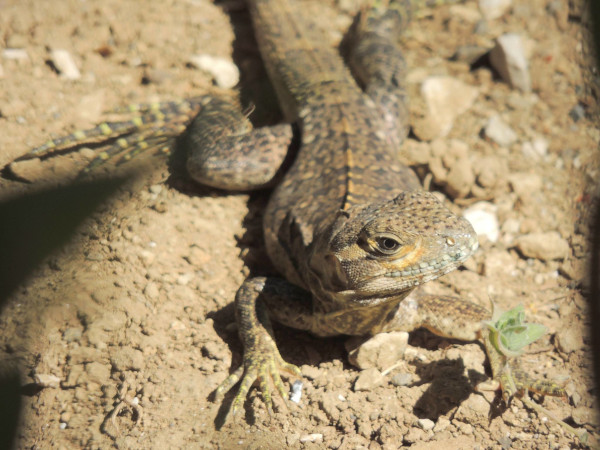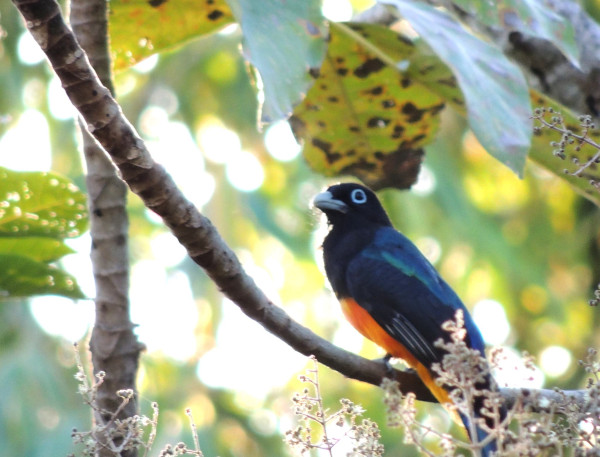|
|
|
Costa Rican turtlehounds
Tuesday, February 5 2019
location: Casa Trogon, Agua Vista Lodging, Montezuma, Nicoya Peninsula, Costa Rica
Today was a kratom day, and at some point I felt like celebrating because because data that had been corked up for over a week was finally flowing in this terrible Electron app I am building. Nothing says victory like a glass of clear Costa Rican rum mixed with that not-very-sweet orange juice grown here (you have to check the ingredients to make sure someone hasn't added sugar to it).
Unlike Gretchen, I mostly don't leave the casita during the day, so the wildlife has to come to me. Some days are better than others, though today was unusually good. It started with the arrival of the coatimundis, who always travel in packs (of something like eight to twelve individuals). They drank out of the pool, sniffed around the grounds, and kept going. Later I saw a turkey vulture hanging out in a leafless (but not dead; it's the dry season) tree down the hill to the east. I also got a gorgeous photograph of a pinkish dragonfly, though I had to make the background be the sky for the camera to know what to focus on.
Gretchen's Spanish teacher had told Gretchen about some sort of sea turtle release that would be happening on the beach just northeast of downtown Montezuma at 4:00pm and she wanted to go see it. So at the appropriate time we piled into the SUV and started our drive down there. At the Agua Vista gate, Gretchen (who was out of the SUV to open the gate) saw a male howler monkey in a tree, so she motioned me to come see. There he was, a male with an enormous throat doing the full-on howler monkey howl. He climbed into one of those Costa Rican trees which is covered with half-inch-long thorns, and we wondered how that was even possible. But for him it was nothing, and he kept howling away. Another howler wasn't far away, about 100 feet to the south, and they seemed to be communicating with one another.
When we arrived at the beach northeast of Montezuma, there wasn't anything obvious going on. A couple women who'd arrived just ahead of us, one in a long black dress, suggested something unusual was afoot. But there should've been more commotion. But wandering further northeast up the beach, most of the way to Ylang Ylang, we saw a large gathering of people around a building near the beach. The woman in the black dress had gone there as well. It turned out that that was the place. It was an outfit specifically designed to increase the survival changes of sea turtles. Most of the people working there were young English-speaking American women, and most of what they said was in English. As Gretchen and I joined the throng of people, we learned that this operation gathered eggs from sea turtles laying eggs on various beaches. The eggs were then placed beneath the sand here behind this building. As the eggs hatched, the babies would be placed on the high side of the beach so they could make their way to the sea in as natural of a way as possible. Presumably if taking the baby turtles out in a boat and dumping them directly into the sea worked, they would do that instead, as the process here was kind of elaborate.
First the babies were dug up (and there was about a 90% viability rate with the hatching of the eggs) and placed into a milk crate. Then the crate was taken to the high end of the beach nearby, which was then combed to remove any debris blocking access to the sea. Meanwhile, all the people who had gathered to watch (and most of them seemed familiar with the protocol) had formed two lanes with a swath of empty beach between them. This arrangement was further altered by the turtle ladies as they figured out the needs of this particular batch of baby turtles. Since it would be a large release (about 90 baby turtles) the lane between the onlookers had to be especially wide.
For the first part of the procedure, when the baby turtles were being dug up out of the sand where their eggs had been buried by the turtle rehabilitation staff, there was a small dog hanging out nearby. At first I assumed that this was some beach dog who would eventually be shooed away. But that dog stayed there for the entire turtle excavation and was then present only feet away as the baby turtles were set upon the top of the beach to begin their trek towards the sea. Clearly this dog was a trusted member of the turtle release team, allowed to be in places only turtle-release staff were allowed. But this wasn't the only trusted turtle shepherd dog. There was a larger black dog, a male that otherwise closely resembled our old dog Sally, who was free to roam the lane to the sea that only professional turtle releasers were allowed in. This Sally-style dog seemed to be looking out for the tiny turtles (which, to be honest, from a distance resembled ticks). If a pelican were to swoop down and try to snatch one of those baby turtles, I have a feeling that Sally-style dog would've had something to say about it.
As the baby turtles started reaching the surf, the waves tended to undo their progress, sometimes hurling them among the ankles of those who had come to watch the release. So the turtle-release professionals would call out, telling us to be sure not to move. Occasionally turtles would be repositioned, but for the most part they had to find their own way to the sea. When the last one vanished into the surf, there was a general applause among the gathered, and the Sally-style turtlehound went momentarily crazy with joy. Clearly, this was a moment he lived for. It was all much more moving than expected. It's sad that sea turtles require so much human intervention, but, in the face of so much gratuitous antienvironmentalism, it's refreshing to see so many people giving a shit about some non-personal aspect of the environment that sustains them.
Since we were in Montezuma already, I thought maybe we should have dinner in town (even though our casita refrigerator is full of food). We briefly considered the Montezuma pizza place (which supposedly offers vegan slices) before Gretchen remembered Chris saying Costa Rican pizza sucks. So we went with what works: Sano Banano. We sat out in the outdoor back area (nobody ever seems to dine indoors there). I ordered a coupled Imperial cervezas, the black bean soup, and the curry. Gretchen ordered the rainbow salad (which she'd had last time) and some sort of pasta dish. Unfortunately, on its first attempt, my black bean soup was presented with tiny slices of boiled egg on its surface (mind you, we'd been clear about being vegan). Gretchen took care of that situation before I'd even had time to process it, which was just as well. Boiled eggs are perhaps the most horrifying form of egg there is (come on, people, who wants to smell that?). When the black bean soup finally arrived without any slices of boiled egg floating on the surface, I wanted some hot sauce. Gretchen asked if they had any and was told the only kind available was "Tabasco." Wait, is it 1987? That seemed inappropriate enough for black bean soup but even more inappropriate for the curry when it arrived. It had very little flavor. But with some salt and Tabasco, it became surprisingly good. I didn't expect Tabasco to work with a southeast Asian dish, but it totally did.

Coatimundis come visit the pool. On Facebook I joked that we had a case of the "coatimundis," which caused me to download Office Space on Bittorrent.

The turkey vulture in the leafless tree to the east of our casita.

A fast-running lizard whom an agouti almost stepped on.

What Google Images suggested might be a Baird's Trogon, though it's a little out-of-range.

A magpie-jay.

That pink dragonfly. Click to enlarge.

The aisle between the people to the sea. Note the little turtlehound on the left. Click to enlarge.

The smaller of today's turtlehounds. You can see baby turtles as blotches on the sand.

A baby turtle.
For linking purposes this article's URL is:
http://asecular.com/blog.php?190205 feedback
previous | next |








